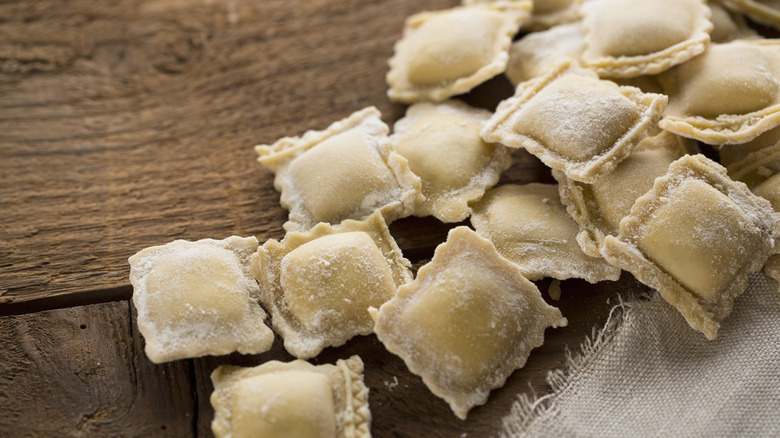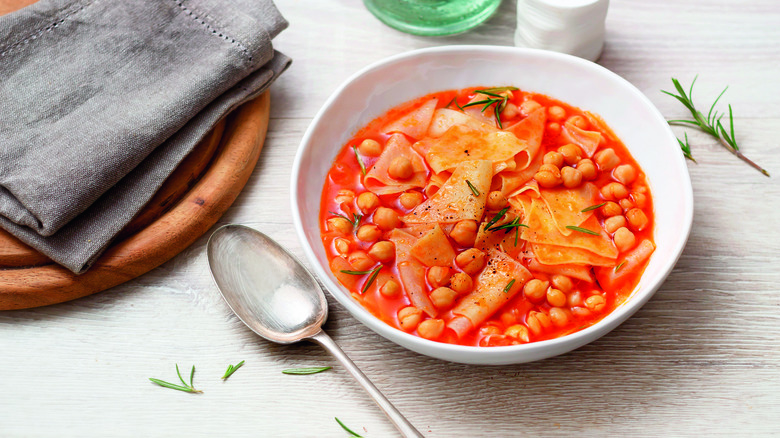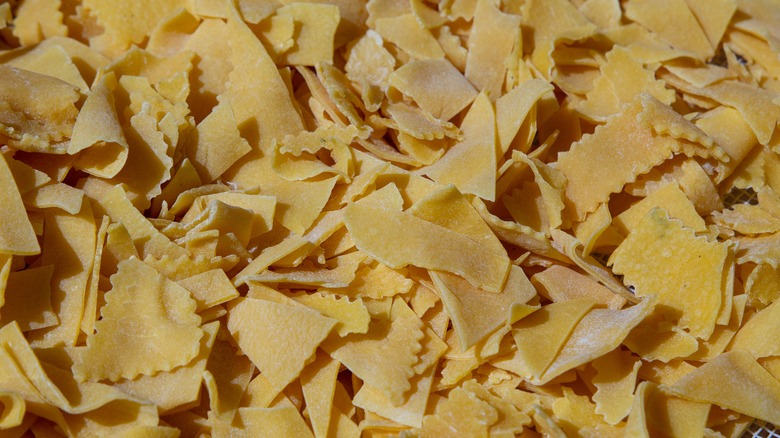The Mistake You Might Be Guilty Of When Making Fresh Pasta
When it comes to fresh pasta, many people get too intimidated to try making it. It's easier than you think to craft fresh pasta, and it can truly shine with the addition of a light sauce or even just some pesto. Depending on what kind you decide to make, you might have leftover trimmings and scraps. Throwing them out? Huge mistake.
Some pasta shapes — like the ravioli in homemade ricotta ravioli in a butter and sage sauce – will call for trimming the edges of the ravioli to make them look clean and presentable. While you might be tempted to discard those, you definitely shouldn't. The professionals know this, and some companies that sell fresh pasta will also sell packets of the scraps. Cutting down on waste is just part of the reasoning here, and these scraps are perfectly fine for all kinds of uses — particularly for just cooking and serving with your favorite sauce.
Once those pasta scraps become the main course, there's no need to call them trimmings or leftovers. They've been used in rustic sauces and soups for generations. So save your scraps of fresh pasta and turn them into maltagliati!
Maltagliati means badly cut
There are a number of unique pasta shapes, and you're probably familiar with the long noodles of linguine and the tubes of penne and rigatoni. Less familiar, though, might be maltagliati, a type of pasta that doesn't come in the regular, uniform shapes that we might be used to. The word itself translates to "badly cut," and that's not a knock on the chef's abilities, that's a tribute to a waste-not sort of mentality.
Maltagliati is believed to have originated in a region of northern Italy called Emilia-Romagna, where it's still popular today. The name refers to the fact that the noodles are leftover scraps and trimmings from fresh pasta, and it's also known by a few different names, including strapponi and stianconi. There's no limits when it comes to ways to serve these uneven scraps of pasta, but with a simple tomato sauce or in a bean soup are some of the most traditional.
Other options that capture the hearty, rustic nature of this rough-cut pasta are to include mushrooms and peas, lentils and tomatoes, or whip up a carbonara that includes artichokes. Really, though, it works just as well with a jar of your favorite Rao's homemade sauce.
Here's how to store your fresh pasta scraps
When you're making fresh pasta, you can definitely press those scraps back together, re-roll them, and make more noodles of any variety. You're still likely to have some pieces leftover, though, and if you don't have enough for another meal or soup, you can save those for later. In most cases the refrigerator isn't going to be an option, as your fresh pasta will only keep for around 18 hours. (Store-bought fresh pasta is prepared differently, and can last for a few days longer.)
The easiest way to store your scraps is to freeze them. Cover the scraps in a light dusting of flour, let them dry for around an hour, and then transfer them to an airtight bag or container. They'll be fine in the freezer for around eight months. A slightly more time-intensive method is to dry them by laying them on a baking sheet until the pieces snap instead of bend, which can take around a day or so if they're left in a cool, dark place.
If you don't want to save pasta scraps, there's one more option that's sure to be popular. All you need to do is deep-fry your pasta dough, then sprinkle it with a dusting of powdered sugar or a mix of powdered sugar and cinnamon. It's a light, sweet dessert that makes the perfect after-dinner treat, and you'll never waste fresh pasta again.


